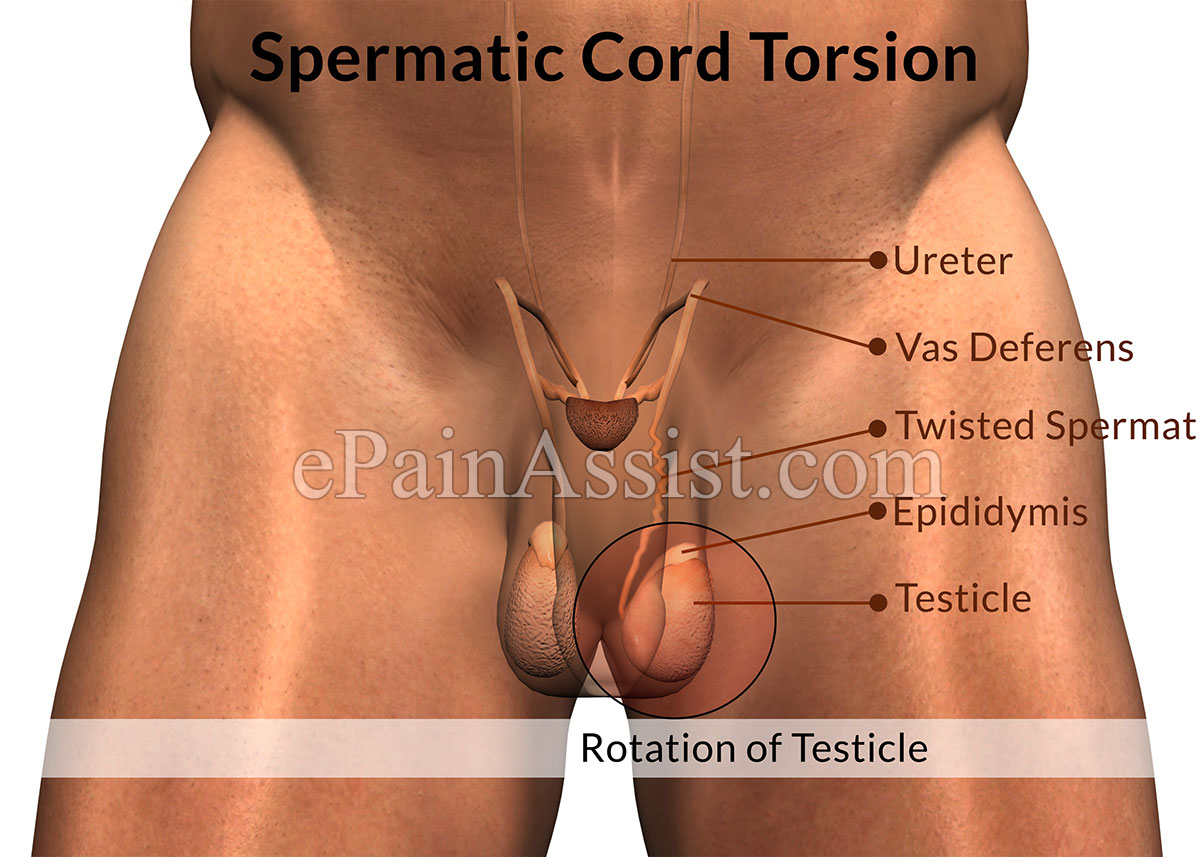Spermatic cord is a structure which supplies blood to the testicles in males. Twisting of spermatic cord often results in cutting off of the blood supply of the testicle. This condition is called as torsion of the testicle.[1]
In few males, the tissues present around the testicle are weakly attached to the scrotum, which is often responsible for twisting of the testicle around the spermatic cord. This condition if left untreated may lead to death of the tissue of the testicle. Spermatic cord torsion is very common in adolescence. This occurs due to rapid growth of the testicles about five to six times their earlier size during this period.
Torsion of the testicle on one side is indicative of the problem occurring on the other side as well as the cause for spermatic cord torsion is usually present on both the sides.
Causes[2] and Risk Factors of Spermatic Cord Torsion

- Abnormal mobility of the testicle.
- Rotation of testicle caused due to direct impact.
- Adolescent boys are more prone to torsions.
- Large testicles, which are more likely to become twisted.
- Testicular cancer, as it causes a drastic increase in the size of the testicle.
Signs and Symptoms of Spermatic Cord Torsion
- Swelling.
- Vomiting.
- Sudden, severe pain in the scrotum.
- Tenderness.
- Nausea.
- Heaviness is felt in the testicle.
- Redness in the skin of the scrotum.
- Irritability or restlessness in infants.
- Lower abdominal distress.
Treatment for Spermatic Cord Torsion
Testicular torsion repair surgery[3] is often required for treating spermatic cord torsion when the condition loses the capacity to improve on its own. The surgery is done by giving local anesthesia in the affected region. Using pain relieving medication helps in making the patient comfortable. A cut is made in the scrotum for bringing the testicle out in order to untwist the cord. The testicle is kept under observation. The normal color of the testicle is indicative of returning blood flow.
Orchiopexy[4] is a procedure which is performed by making few stitches in order to secure the other testicle to the scrotum. Orchiopexy also helps in reducing the chances of torsion in the future. Then the previous testicle is examined again to see whether it is recovering appropriately. In case of permanent tissue damage, the affected testicle is removed. If there is successful recovery of the tissue, this testis is secured to the scrotum with stitches.
Surgery however may carry the risks, as is the case with other surgeries, of infection and reaction to pain medications. There is a good chance that the scrotum may swell significantly following the surgery and blood may collect in the scrotum. There is a rare chance of failure of surgery and twisting of the testicle again.
After surgery the patient must take as much rest as possible. Keeping the scrotum in elevated position also helps in reducing the discomfort. Using ice packs and pain medications may also help in reducing pain.
No further monitoring is required after successful recovery from the surgery however, if the patient notices similar symptoms in the future, he should go to the nearest emergency room and seek immediate treatment.
Investigations for Spermatic Cord Torsion
A medical history and thorough subjective and physical examination is performed to diagnose testicular torsion. Swollen and painful scrotum is generally indicative of the condition. X-ray is the most common diagnostic test. In few cases, special tests are conducted to help in assessing other conditions like infection.
